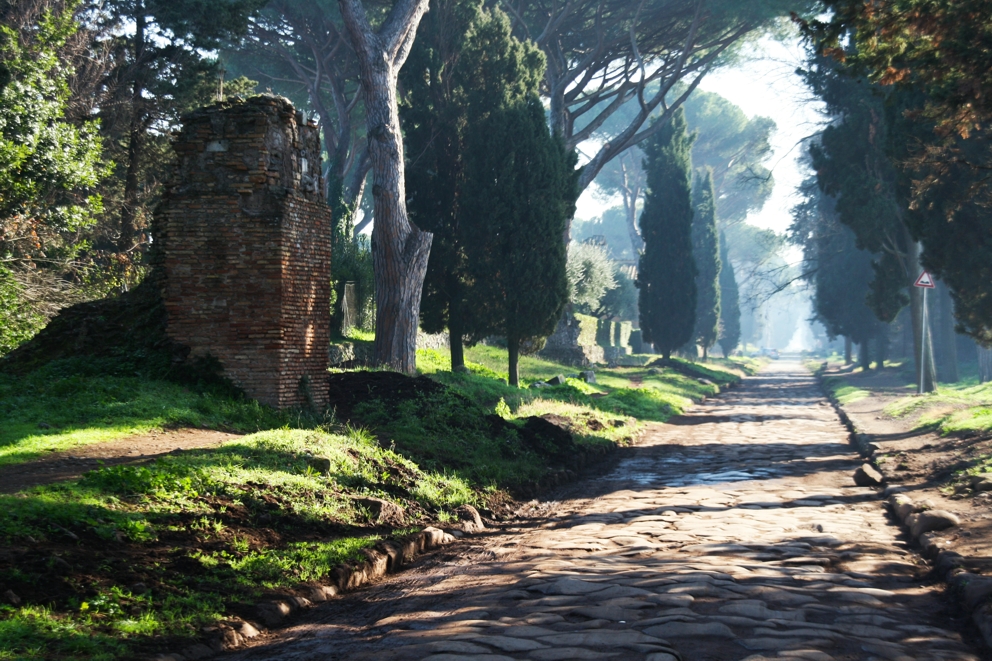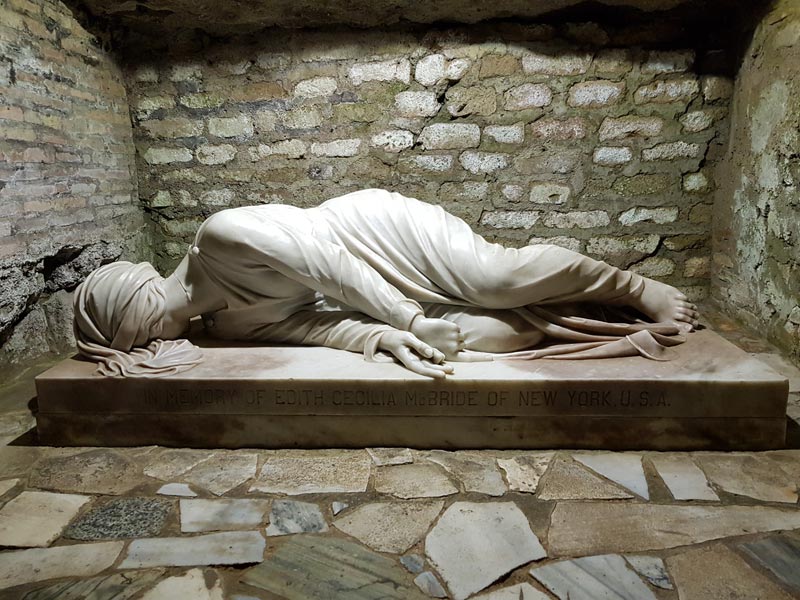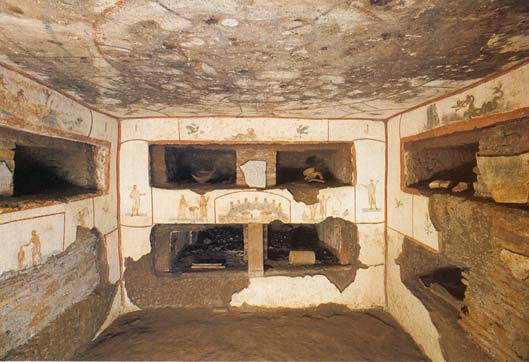Via Appia. The first 90km section of this road was laid in 312 BC and then extended in 100BC to reach Brindisi on Italy’s southern Adriatic coast. It has long been one of Rome’s exclusive addresses, a beautiful cobbled thoroughfare flanked by grassy fields, Roman structures, and towering pine trees. It was here that Spartacus and 6000 of his slave rebels were crucified in 71BC.

As Christianity was illegal until about 500 AD, Christians couldn’t be buried inside the walls of Rome. The Via Appia was well on the outskirts of the city. Christians also shunned cremation preferring to be buried whole to facilitate resurrection. In all there are 66 catacombs with 300kms of underground burial chambers carved out of tufa on four levels. The lower levels are flooded. They were abandoned for over 1800 years and lost until recently.
You can’t visit all 300kms but three major catacombs are open for guided tours. To get here, take the metro to Pyramid and take bus 118 out and back.
Catacomb of San Collisto. These are the largest and most visited of the catacombs. Founded at the end of the second century, they became the official cemetery of the newly established Roman Church. In the 20kms of tunnels explored to date were the tombs of 500,000 people, 16 popes and 60 martyrs. The patron saint of music, St Cecilia was buried here and when her body was exhumed in 1596, it was apparently perfectly preserved. Unlike the Paris catacombs (the Paris cemeteries inside the city were emptied and all the bones put down there), there are no bones, only the narrow cavities carved into the rock, usually just large enough to hold one body. The walls are painted with fading Christian symbols and graffiti is common.


Statue of St Cecilia



